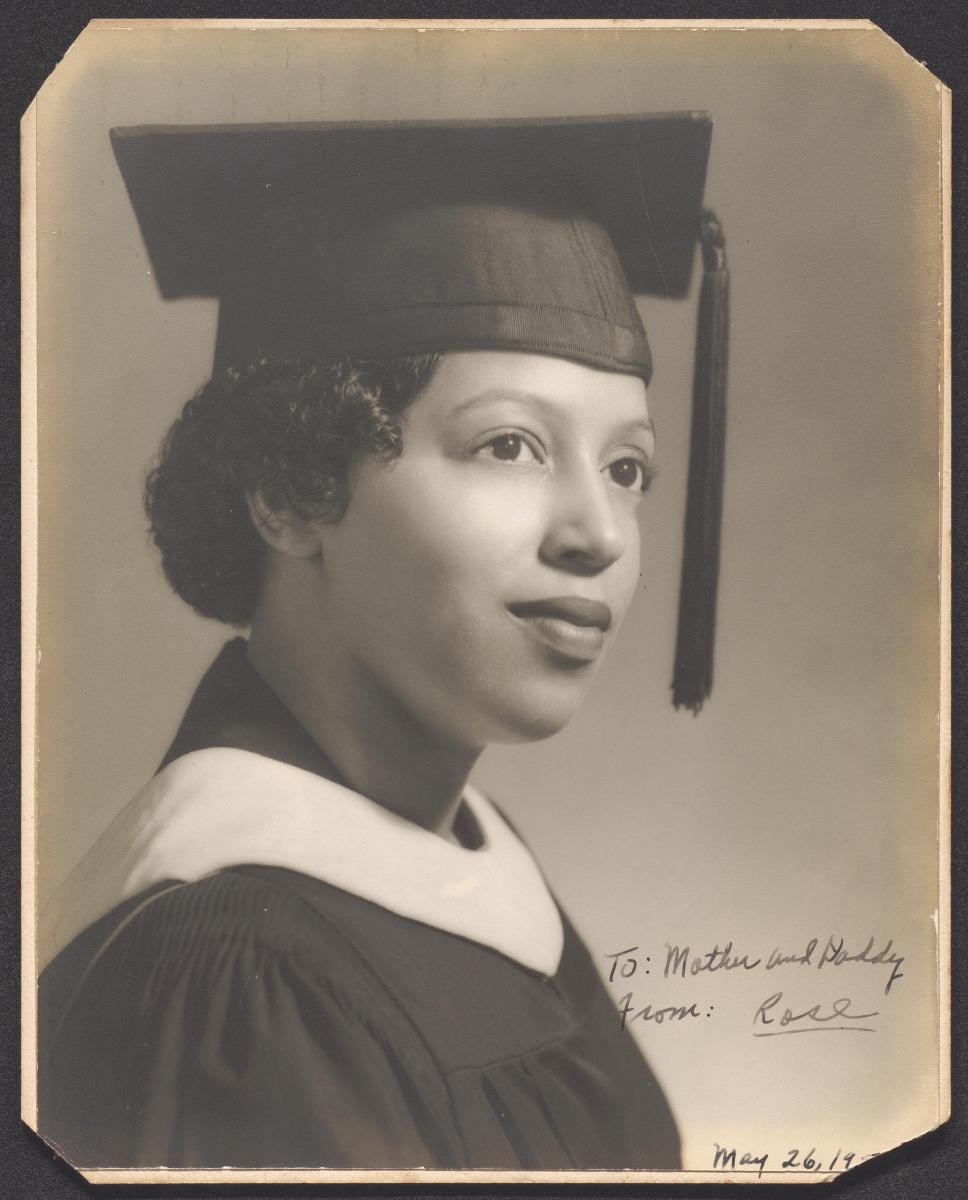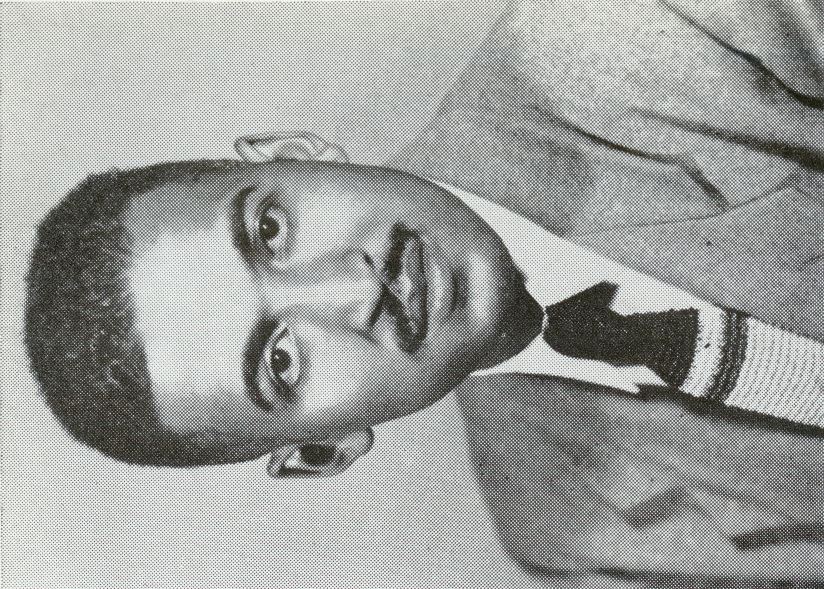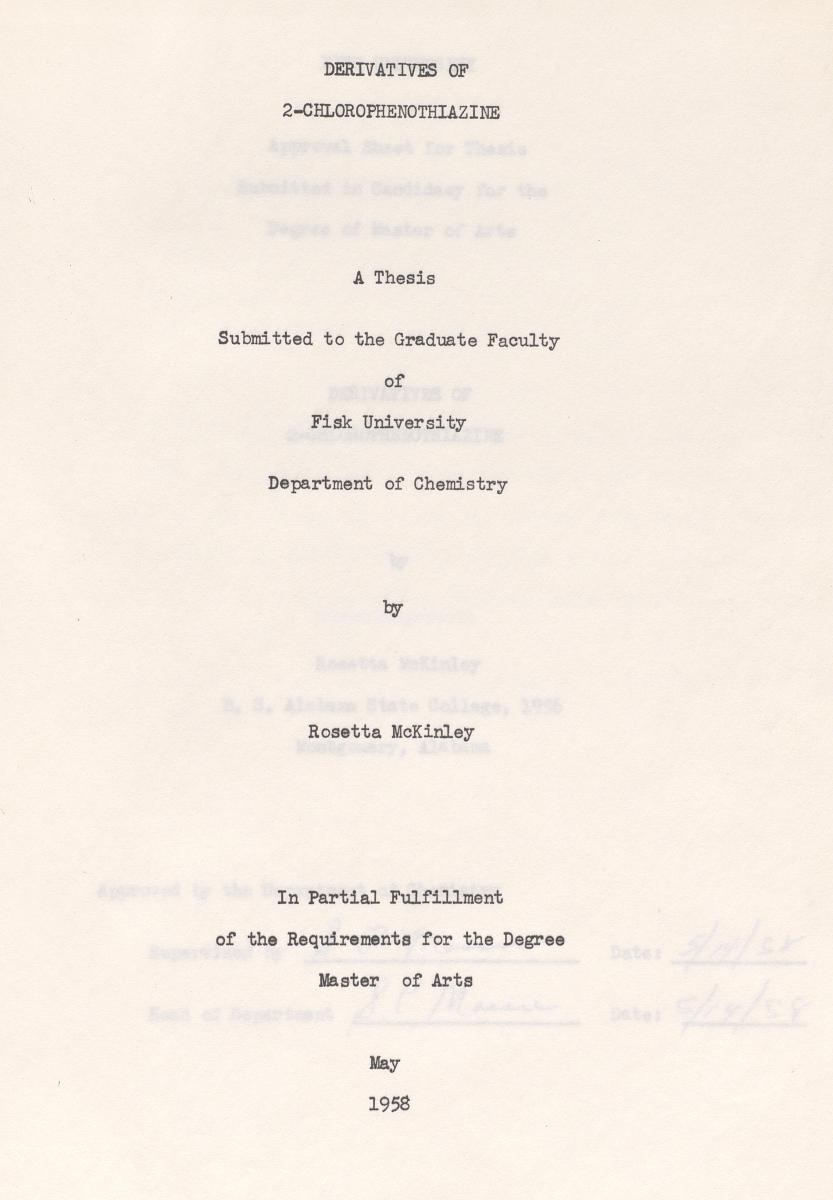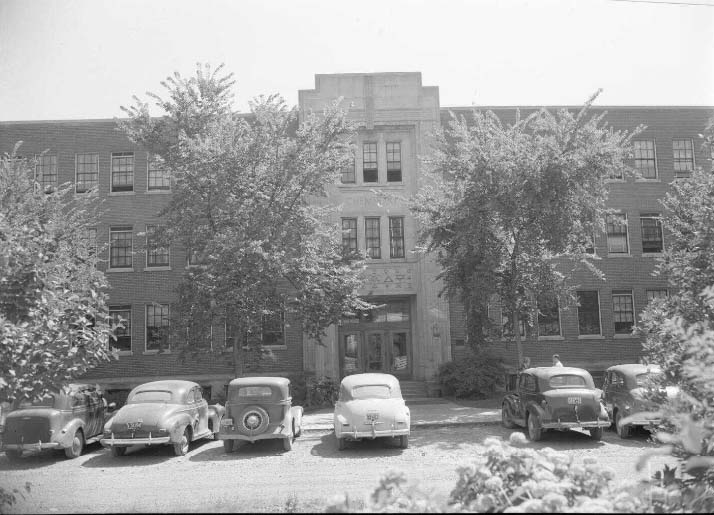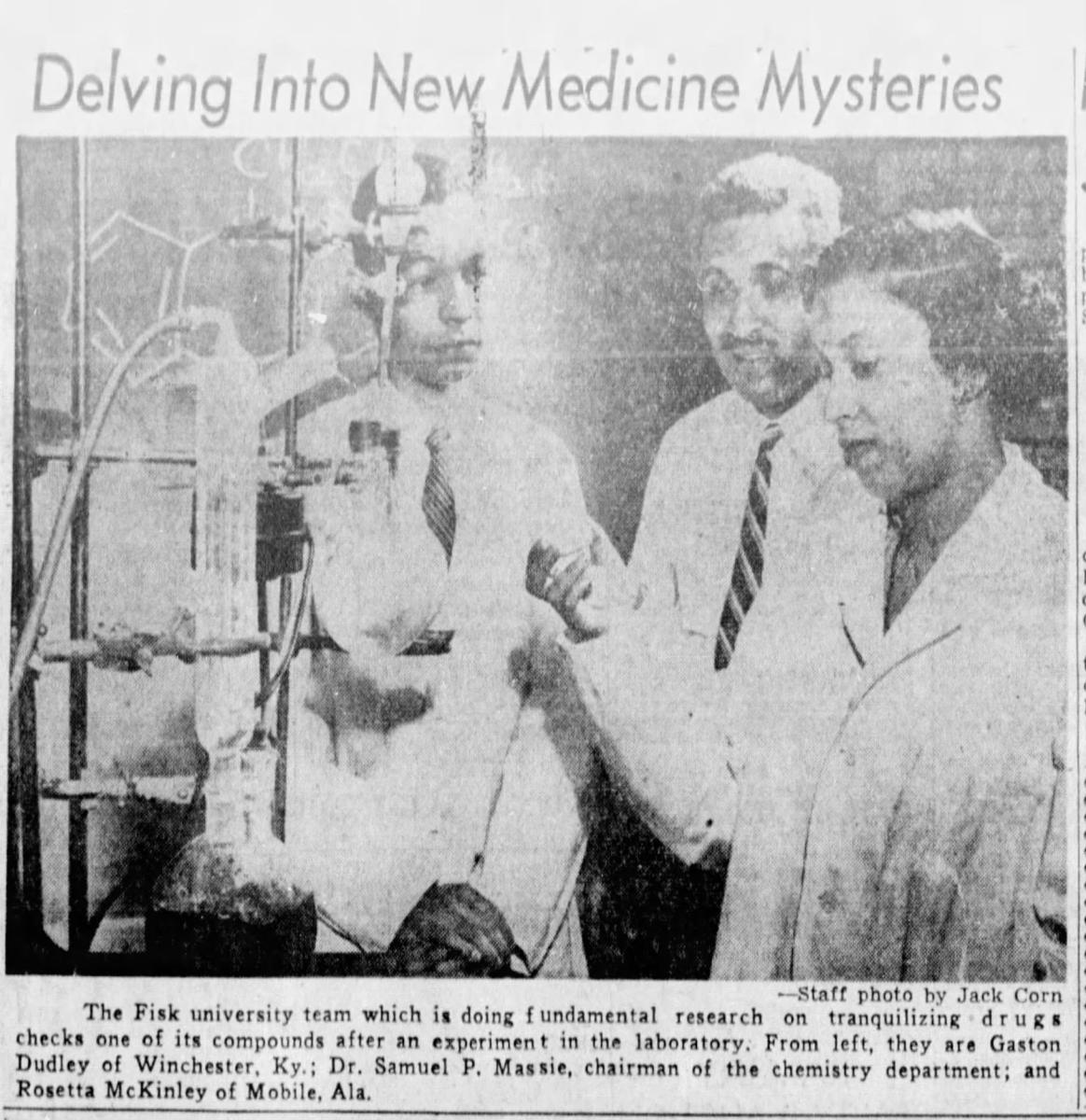 Rosetta Henderson earned her master’s degree in 1958 from Fisk University in Nashville, Tennessee, where she studied under professor Dr. Samuel Massie, a renowned African American chemist. He had worked on the Manhattan Project and authored a seminal paper in anti-psychotic pharmaceutical research.
Rosetta Henderson earned her master’s degree in 1958 from Fisk University in Nashville, Tennessee, where she studied under professor Dr. Samuel Massie, a renowned African American chemist. He had worked on the Manhattan Project and authored a seminal paper in anti-psychotic pharmaceutical research.
Henderson’s thesis focused on derivatives of 2-Chlorophenothiazine, a compound integral to synthesizing some anti-psychotic medications.
Photograph: News clipping featuring Gaston Dudley, Dr. Massie, and Rosetta (McKinley) Henderson
Henderson then took advantage of the predoctoral fellowship program recently established by the National Science Foundation and spent a summer at Oregon State University conducting research.
She then began Ph.D. coursework at Ohio University, where her studies brought heavy opposition from a particular professor within the chemistry department. During exams from this professor, Henderson was forced to sit in the back of the lecture hall because the professor accused her of cheating. The lecture halls only had right-handed desks, meaning left-handed students, such as Henderson, could only write their answers if they turned the opposite way of right-handed students, giving the illusion of trying to see other students’ work.
Ultimately, Henderson completed most of her coursework requirements but decided to look for professional positions after concluding that she would likely never complete the Ph.D. without this professor’s support.
In the following clips, Henderson recalls her graduate studies.
Photographs


